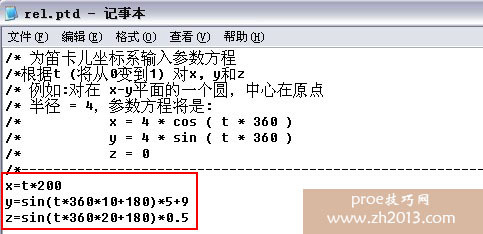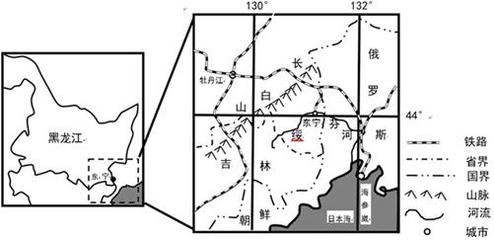Theta function
From Wikipedia, the free encyclopedia
Jump to: navigation,search
For other θ functions, see Thetafunction (disambiguation).
Jacobi's original theta function with and with nome . Conventions are (Mathematica):this is:
In mathematics,theta functions are specialfunctions of severalcomplex variables. They are important in many areas, includingthe theories of abelianvarieties and moduli spaces, andof quadraticforms. They have also been applied to soliton theory. Whengeneralized to a Grassmannalgebra, they also appear in quantum fieldtheory.
The most common form of theta function is that occurring in thetheory of ellipticfunctions. With respect to one of the complex variables(conventionally called z), a theta function has a propertyexpressing its behavior with respect to the addition of a period ofthe associated elliptic functions, making it a quasiperiodicfunction. In the abstract theory this comes from a line bundlecondition of descent.
Contents
Jacobi theta function
There are several closely related functions called Jacobi thetafunctions, and many different and incompatible systems of notationfor them. One Jacobi theta function (named after Carl GustavJacob Jacobi) is a function defined for two complex variablesz and τ, where z can be any complex number and τ isconfined to the upperhalf-plane, which means it has positive imaginary part. It isgiven by the formula
where q = exp(πiτ) and η = exp(2πiz). It isa Jacobiform. If τ is fixed, this becomes a Fourier seriesfor a periodic entire functionof z with period 1; in this case, the theta functionsatisfies the identity
The function also behaves very regularly with respect to itsquasi-period τ and satisfies the functional equation
where a and b are integers.
Theta function with different nome . The black dot in the right-hand picture indicates how is changing.
Theta function with different nome . The black dot in the right-hand picture indicates how is changing.
Auxiliary functions
The Jacobi theta function defined above is sometimes consideredalong with three auxiliary theta functions, in which case it iswritten with a double 0 subscript:
The auxiliary (or half-period) functions are defined by
This notation follows Riemann andMumford;Jacobi'soriginal formulation was in terms of the nome q= exp(πiτ) rather than τ. In Jacobi's notation theθ-functions are written like this:
The above definitions of the Jacobi theta functions are by nomeans unique. See Jacobi theta functions - notational variations for furtherdiscussion.
If we set z = 0 in the above theta functions, we obtainfour functions of τ only, defined on the upper half-plane(sometimes called theta constants.) These can be used to define avariety of modular forms, andto parametrize certain curves; in particular, the Jacobiidentity is
which is the Fermatcurve of degree four.
Jacobi identities
Jacobi's identities describe how theta functions transform underthe modulargroup, which is generated by τ ↦ τ+1 and τ ↦ -1/τ. We alreadyhave equations for the first transformation; for the second,let
Then
Theta functions in terms of the nome
Instead of expressing the Theta functions in terms of and , we may express them in terms of arguments and the nome q, where and . In this form, the functions become

We see that the Theta functions can also be defined in terms ofw and q, without a direct reference to theexponential function. These formulas can, therefore, be used todefine the Theta functions over other fields wherethe exponential function might not be everywhere defined, such asfields of p-adicnumbers.
Product representations
The Jacobi tripleproduct tells us that for complex numbers w and qwith |q| < 1 and w ≠ 0 we have
It can be proven by elementary means, as for instance in Hardyand Wright's An Introduction to the Theory of Numbers.
If we express the theta function in terms of the nome and then
We therefore obtain a product formula for the theta function inthe form
In terms of w and q:
where is the q-Pochhammersymbol and is the q-thetafunction. Expanding terms out, the Jacobi triple product canalso be written
which we may also write as
This form is valid in general but clearly is of particularinterest when z is real. Similar product formulas for the auxiliarytheta functions are
Integral representations
The Jacobi theta functions have the following integralrepresentations:
Explicit values
See [1]
Some series identities
The next two series identities were proved by István Mező
- [2]
These relations hold for all0<q<1. Specializing the valuesof q, we have the next parameter free sums
and
Zeros of the Jacobi Theta Functions
All zeros of the Jacobi Theta Functions are simple zeros and aregiven by the following:
where m,n are arbitrary integers.
Relation to the Riemann zeta function
The relation
was used by Riemann to prove thefunctional equation for the Riemann zetafunction, by means of the integral
which can be shown to be invariant under substitution ofs by 1 − s. The corresponding integral for znot zero is given in the article on the Hurwitz zetafunction.
Relation to the Weierstrass elliptic function
The theta function was used by Jacobi to construct (in a formadapted to easy calculation) hiselliptic functions as the quotients of the above four thetafunctions, and could have been used by him to construct Weierstrass'selliptic functions also, since
where the second derivative is with respect to z and theconstant c is defined so that the Laurentexpansion of at z = 0 has zero constant term.
Relation to the q-gamma function
The fourth theta function - and thus the others too - isintimately connected to the Jacksonq-gamma function via the relation[3]
Some relations to modular forms
Let η be the Dedekind etafunction. Then
A solution to heat equation
The Jacobi theta function is the unique solution to theone-dimensional heat equation withperiodic boundary conditions at time zero. This is most easily seenby taking z = x to be real, and taking τ = itwith t real and positive. Then we can write
which solves the heat equation
That this solution is unique can be seen by noting that att = 0, the theta function becomes the Dirac comb:
where δ is the Dirac deltafunction. Thus, general solutions can be specified byconvolving the (periodic) boundary condition at t = 0 withthe theta function.
Relation to the Heisenberg group
The Jacobi theta function is invariant under the action of adiscrete subgroup of the Heisenberggroup. This invariance is presented in the article on thethetarepresentation of the Heisenberg group.
Generalizations
If F is a quadratic form inn variables, then the theta function associated withF is
with the sum extending over the lattice ofintegers Zn. This theta function is amodularform of weight n/2 (on an appropriately definedsubgroup) of the modular group. Inthe Fourier expansion,
the numbers RF(k) are called therepresentation numbers of the form.
Ramanujan theta function
Further information: Ramanujantheta function and mock thetafunction
Riemann theta function
Let
be set of symmetric squarematriceswhose imaginary part is positivedefinite. Hn is called the Siegel upperhalf-space and is the multi-dimensional analog of the upperhalf-plane. The n-dimensional analogue of the modular group isthe symplecticgroup Sp(2n,Z); for n = 1, Sp(2,Z) =SL(2,Z). The n-dimensional analog of the congruencesubgroups is played by .
Then, given , the Riemann theta function is defined as
Here, is an n-dimensional complex vector, and the superscriptT denotes the transpose. The Jacobitheta function is then a special case, with n = 1 and where is the upper half-plane.
The Riemann theta converges absolutely and uniformly on compactsubsets of
The functional equation is
which holds for all vectors , and for all and .
Poincaré series
The Poincaréseries generalizes the theta series to automorphic forms withrespect to arbitrary Fuchsiangroups.
Notes
- Jumpup ^ Jinhee, Yi (2004), "Theta-functionidentities and the explicit formulas for theta-function and theirapplications", Journal of Mathematical Analysisand Applications 292: 381–400, doi:10.1016/j.jmaa.2003.12.0091.
- Jumpup ^ Mező, István (2013), "Duplicationformulae involving Jacobi theta functions and Gosper'sq-trigonometric functions", Proceedingsof the American Mathematical Society 141 (7):2401–2410
- Jumpup ^ Mező, István (2012). "A q-Raabeformula and an integral of the fourth Jacobi thetafunction". Journal of Number Theory130 (2): 360–369.
References
Further reading
External links
This article incorporates material from Integral representations of Jacobi theta functions on PlanetMath, which islicensed under the Creative CommonsAttribution/Share-Alike License.
Categories:
 爱华网
爱华网



